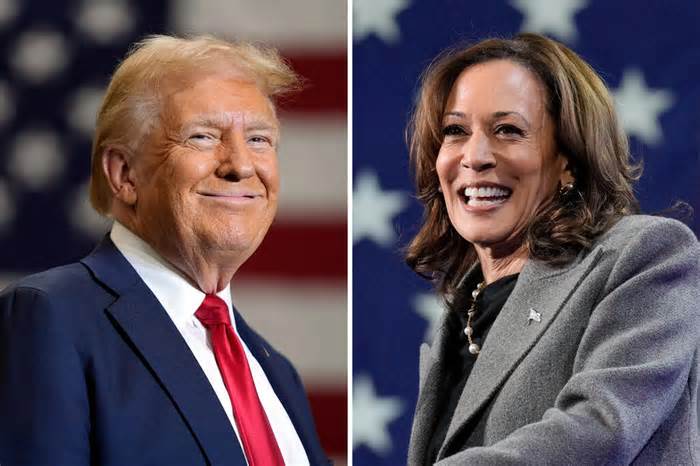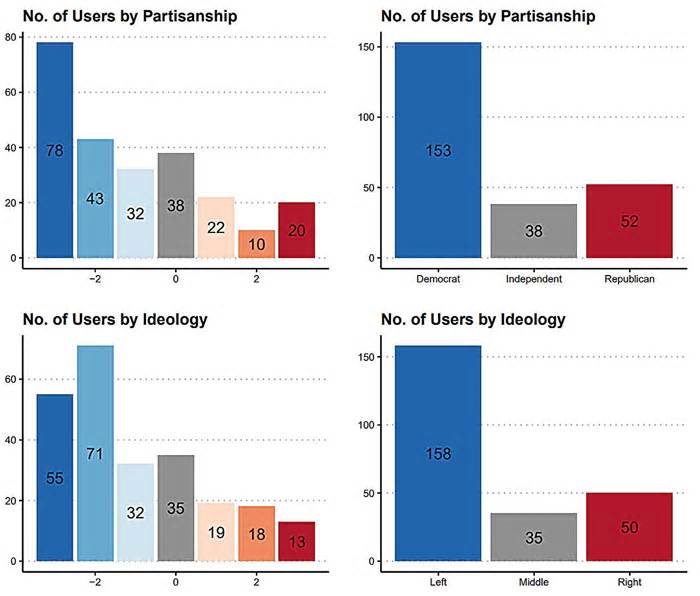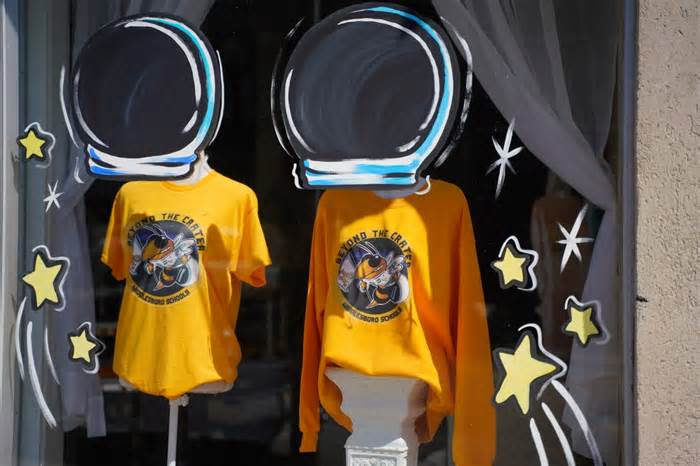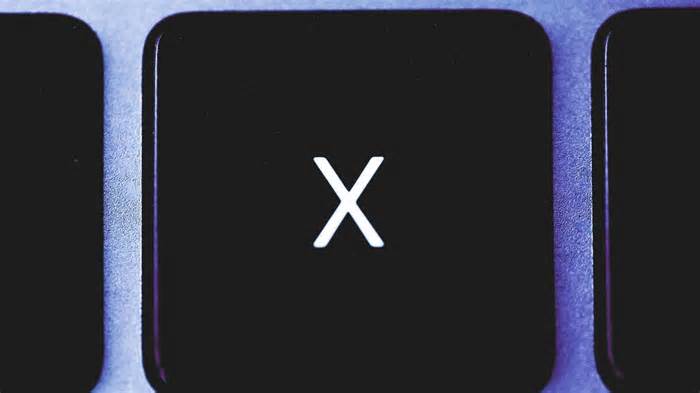
Who are the top North Bay donors in the presidential race, and how much did they give?
- by Santa Rosa Press Democrat
- Nov 03, 2024
- 0 Comments
- 0 Likes Flag 0 Of 5

In mid-July, after a disastrous debate performance and under increasing pressure from fellow Democrats concerned about his age, President Biden dropped out of the race, making way for Harris.
Grasseschi said the switch galvanized political giving for Democrats and their allies in this election.
She compared the local political activity since Harris took over the top of the ticket to 2008, when former President Barack Obama was elected to his first term.
“It's just been a really exciting time, but I would say it's building on a foundation of really strong activism in our county,” Grasseschi said.
‘Mishmash’ of political giving
The nation’s political giving network is a dizzying array of political committees, organizations and campaigns that all come with different reporting requirements and donation limits.
That’s especially so in the post Citizens United-era, after the 2010 U.S. Supreme Court ruling allowed unlimited independent expenditures for political campaigns by corporations, nonprofit organizations, labor unions and other groups.
It can be a daunting and time-consuming task for the general public to track where political donations go and how they’re spent.
“California may be the ATM of American politics.”
David McCuan, political science professor at Sonoma State University
Justin Levitt, an election law professor at Loyola Marymount University Law School, said the nation’s campaign finance structure is the product of “fits and starts” of regulation over many years. Those fits and starts have been shaped by courts considering the impact of those regulations on people’s First Amendment rights, he added.
The result is a “mishmash … that doesn’t make anybody very happy,” said Levitt, who worked in the White House as its first senior policy adviser for democracy and voting rights between 2021 and 2022.
Levitt pointed to the big divide between enacted legislation that benefits the wealthy few and laws that benefit everyone else.
“I will say we have a big problem in this country with a governing structure that is overly responsive to wealthy interests,” he said.
Levitt said the nation’s campaign finance infrastructure has evolved around the various ways that different types of organizations can convey political messages and reach different groups. All of that costs money, even the value of somebody's time going door to door.
Professor’s take on money in politics
The nation’s convoluted campaign finance network is the only factor influencing American politics and governance, said Justin Levitt, election law professor at Loyola Marymount University Law School.
Wealth and power have long been keys to political access in halls of government.
Even if campaign contributions were suddenly limited to a total $100 in a four-year presidential cycle, Levitt said, “Bill Gates would still get his call returned a lot faster than I would.”
That doesn’t mean the political contribution system can’t be improved, he said. He suggested “sensible disclosure” and “sensible regulation” to ensure that fundraising committees and action committees are following the rules.
Those changes, while important, should be part of a larger effort to address the role of money in politics, he said.
“Our attitude toward how we treat our legislators and how we demand they listen to us, and our attitude toward how we treat various classes of wealth in society is it at least as important,” Levitt said.
There are some limits still in place. Since giving large amounts of money directly to a campaign has the potential to corrupt candidates, the U.S. Supreme Court has ruled that Congress may regulate the amount of money that individuals can give to candidate campaigns.
Currently, the federal government caps candidate donations at $3,300 per election, where the maximum an individual can give during an election cycle is $6,600 ($3,300 in the primary election and $3,300 in the general election).
But there are ways around those limits. Donors can direct their contributions to fundraising committees and political action committees that have little to no direct connections to the candidate’s campaign and so have fewer regulations and scant oversight.
“...If you look at not just the dollars, but also look at the activity, Sonoma County is up there in terms of postcard writing, call banking, walking (door to door).”
Barbara Grasseschi, prominent Sonoma County Democratic Party donor
The world of PACs is itself a complex patchwork of different categories including corporate and labor PACs, hybrid PACs and super PACs. Regulations bar direct coordination between campaigns and PACs but oversight is limited, meaning donation thresholds are high and reporting requirements are minimal.
These committees can spend their money on messaging that benefits a candidate, attacks a rival candidate or focuses on specific issues, without ever giving directly to a favored candidate. It can be difficult to track exactly how PACs spend their dollars and even who their donors are.
‘ATM of American politics’
The North Bay fundraising disparity between Harris and Trump, while striking, isn’t surprising given the overwhelming advantage Democrats have over Republicans in voter registration across the region.
The funding gap between Harris and Trump seen in the North Bay spans California, where donations to the vice president and political committees allied with her ― $146 million ― are four times the $37 million in donations to the former president, according to FEC records.
And political giving from the Bay Area and Southern California largely fuels California’s lead fundraising role for presidential campaigns.
That top ranking holds again this year: The largest portion of the $1.6 billion raised for Harris and Trump nationwide, nearly $203 million, comes from California, according to the Federal Election Commission.
That’s more than the sums from Texas and New York combined.
“California may be the ATM of American politics,” said David McCuan, a political science professor at Sonoma State University.
Many avenues for political contributions
There are numerous ways to give to a political cause or candidate for office, ranging from direct contributions to an individual’s campaign to donations received by groups whose work may benefit or oppose candidates.
The following are some types of organizations active in political fundraising and spending in elections. Some are bound by contribution limits, depending on the work they do and who they give to.
Candidate or campaign committees
These committees accept donations and make expenditures under the candidate’s authority. A candidate can only have one candidate committee.
Since giving large amounts of money to a candidate has the potential to corrupt the candidate, the U.S. Supreme Court has said that Congress may regulate the amount of money that individuals can give directly to candidates.
The federal government’s current cap on candidate donations is $3,300 per election cycle, where the maximum an individual can give during an election cycle is $6,600 ($3,300 in the primary election and $3,300 in the general election).
Political action committees or PACs
PACs can raise money that can be given directly to candidates or can be spent on the committee’s own political activities. There are various types of PACS, including separate segregated funds or nonconnected committees.
Separate segregated fund PACs are created and run by corporations, labor unions, membership organizations or trade associations. These committees can solicit contributions only from individuals associated with a connected or sponsoring organization.
In contrast, nonconnected PACs, as their name suggests, are not sponsored by or connected to corporations, labor unions or trade and membership groups. Such PACS are free to solicit contributions from the general public.
Hybrid PACS
A hybrid PAC is a committee with two different, segregated, bank accounts. One is for giving donations to other candidates and must abide by applicable rules and restrictions around limits on raising money. The other account is for spending rather than giving (for example, buying ads), and doesn’t have to pay attention to limits on raising money, other than from noncitizens.
Super PACs
Super PACs closely resemble PACs but cannot give money directly to candidates. Known as independent expenditure committees, super PACs are committees that may receive unlimited contributions from individuals, corporations, labor unions and other PACs for the purpose of financing independent expenditures and other independent political activity.
Joint fundraising committees
Joint fundraising committees conduct fundraising activities together with one or more other political committees or unregistered organizations.
According to the nonprofit, nonpartisan group OpenSecrets, joint fundraising committees allow campaigns or other political organizations to work together and raise money from big donors more efficiently. In a joint fundraising committee, multiple candidates or organizations are able to raise money together, splitting the cost of fundraising while generating large sums for the campaigns.
SOURCES: Federal Elections Commission, OpenSecrets and Justin Levitt, professor of law at Loyola Law School at Loyola Marymount University
Digging in to spending by county
As with donations to campaigns and political action committees, Sonoma and Marin counties rank at the top for overall donations coming out of the North Bay to joint fundraising committees.
Marin County donors contributed nearly $10.3 million donations to joint fundraising committees associated with either candidate. The next North Bay counties with most donations to JFCs were Sonoma County ($4.7 million), Napa County (nearly $1.2 million) and Solano County (just over $1 million).
When it came to individual campaign and PAC donations, Sonoma County contributions totaled $8.4 million, and Marin County’s totaled $7.5 million.
Please first to comment
Related Post
Stay Connected
Tweets by elonmuskTo get the latest tweets please make sure you are logged in on X on this browser.
Sponsored
Popular Post
Tesla: Buy This Dip, Energy Growth And Margin Recovery Are Vastly Underappreciated
28 ViewsJul 29 ,2024







 Energy
Energy

















